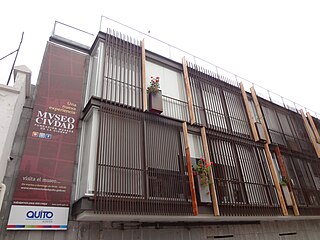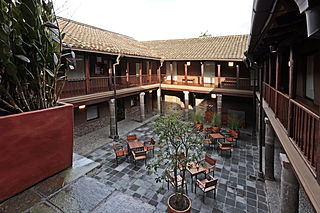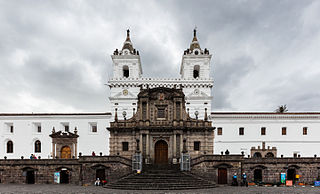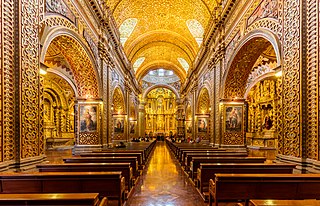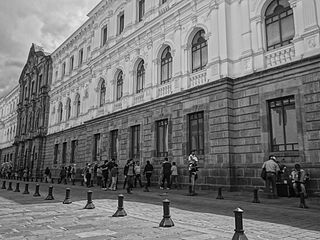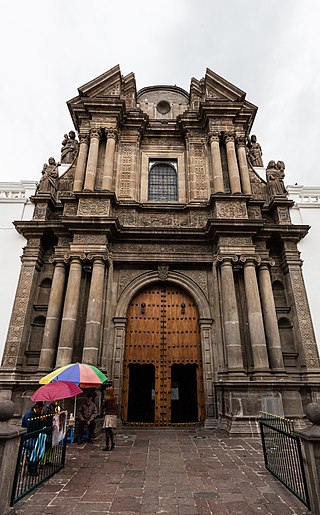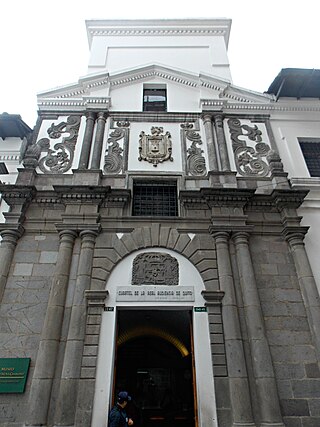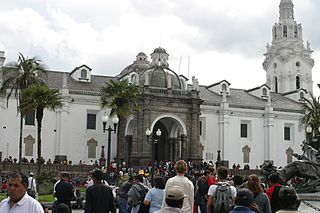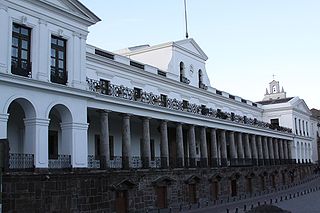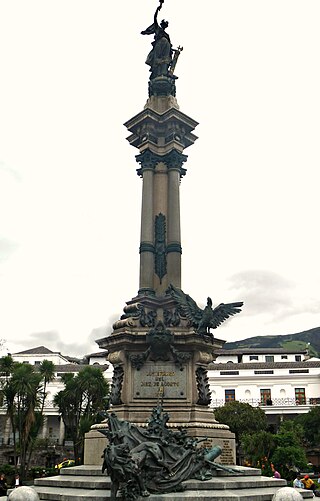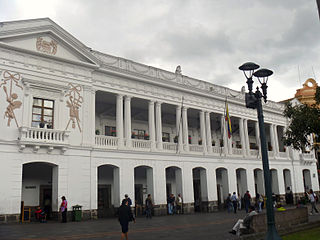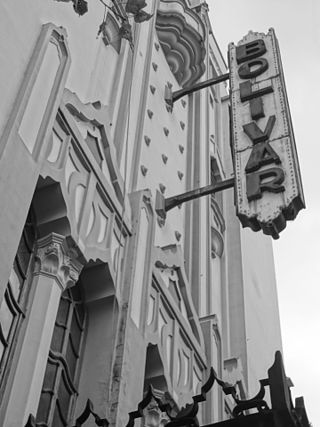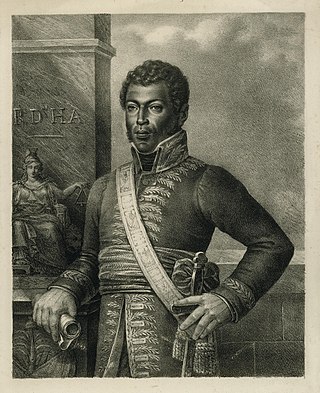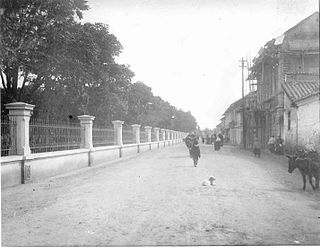Self-guided Sightseeing Tour #1 in Quito, Ecuador
Legend
Guided Free Walking Tours
Book free guided walking tours in Quito.
Guided Sightseeing Tours
Book guided sightseeing tours and activities in Quito.
Tour Facts
6 km
199 m
Experience Quito in Ecuador in a whole new way with our free self-guided sightseeing tour. This site not only offers you practical information and insider tips, but also a rich variety of activities and sights you shouldn't miss. Whether you love art and culture, want to explore historical sites or simply want to experience the vibrant atmosphere of a lively city - you'll find everything you need for your personal adventure here.
Activities in QuitoIndividual Sights in QuitoSight 1: Iglesia de Santo Domingo
Sight 2: City Museum
The City Museum is a museum in the colonial center of Quito, Ecuador. It is located on Garcia Moreno Street, between Morales and Rocafuerte.
Sight 3: Casa del Alabado Pre-Columbian Art Museum
Casa del Alabado is a Pre-Columbian art museum in Quito, Ecuador. The museum is located in a colonial house built in the 17th century during the Spanish Colony. It houses a collection of over 5,000 archaeological pieces, 500 of which are on permanent display.
Wikipedia: Casa del Alabado Museum of Pre-Columbian Art (EN), Website
Sight 4: Iglesia de San Francisco
The Basilica and Convent of San Francisco, commonly known as el San Francisco, is a Catholic basilica that stands in the middle of the historic center of Quito, in front of the square of the same name. It is the oldest and most significant religious site in Ecuador. The structure is the largest architectural complex within the historic centers of all of South America, and for this reason it was known as "El Escorial of the New World". San Francisco is considered a jewel of continental architecture for its mixture of different styles combined throughout more than 150 years of construction. San Francisco is part of the UNESCO World Heritage Site "City of Quito".
Wikipedia: Basilica and Convent of San Francisco, Quito (EN)
Sight 5: Church of the Society of Jesus
The Church and Convent of San Ignacio de Loyola de la Compañía de Jesús de Quito, also known in the Ecuadorian people simply as La Compañía, is a Catholic clerical complex located on the corner formed by calles García Moreno and Sucre, in the Historic Center of the city of Quito, capital of Ecuador. The façade of its main temple is entirely carved in volcanic stone. Over time, this church has also been called: "Temple of Solomon of South America". Father Bernardo Recio, a traveling Jesuit, called it "Golden Ember".
Sight 6: Centro Cultural Metropolitano
Centro Cultural Metropolitano is a cultural institution based in Quito, Ecuador. It was established in 1997 in a building which dates to 1622.
Sight 7: La Iglesia de El Sagrario
La Iglesia de El Sagrario is a Renaissance Catholic Church in the city of Quito, capital of Ecuador. It is located in the Historic Center of the city, on calle García Moreno, formerly known as calle de las Siete Cruces, a few meters from the corner with calle Eugenio Espejo. It is part of the Metropolitan Cathedral complex, although it seems more like an independent church than an adjoining chapel, both because of its size and because of its importance in Quito's art.
Sight 8: Museo Alberto Mena Caamaño
Alberto Mena Caamaño Museum is a museum in Quito, Ecuador. A cultural institution of Quito, the capital of Ecuador, it is located in the historic center of the city, next to the Palacio de Carondelet. The Rough Guide to Ecuador considers it to be the "old town's most rewarding museum".
Sight 9: Catedral Metropolitana Quito
The Quito Metropolitan Cathedral, is a Catholic cathedral in Quito, Ecuador. Located on the southwestern side of the Plaza de la Independencia, it served as a seat of the Diocese of Quito from 1545 until 1848 when it was elevated to Archdiocese. In 1995, it was elevated to the Cathedral of Ecuador, making it the seniormost Catholic church in the country.
Sight 10: Palacio de Carondelet
Carondelet Palace is the seat of government of the Republic of Ecuador, located in Quito. Access is by the public space known as Independence Square or Plaza Grande, around which are also the Archbishop's Palace, Municipal Palace, Hotel Plaza Grande, and Metropolitan Cathedral.
Sight 11: Plaza de la Independencia
Get Ticket*Independence Square is the principal and central public square of Quito, Ecuador. This is the central square of the city and one of the symbols of the executive power of the nation. Its main feature is the monument to the independence heroes of August 10, 1809, the date remembered as the first cry of independence of the Royal Audience of Quito from the Spanish monarchy. The square is flanked by the Carondelet Palace, the Metropolitan Cathedral, the Archbishop's Palace, the Municipal Palace and the Plaza Grande Hotel.
Sight 12: Monumento a la Independencia
The monument to Independence, also known as the monument to the heroes of August 10, 1809, is a commemorative column located in the city of Quito D.M. which is located in the center of the Plaza Grande, being its most important element and the one that gives its name to the square. He gets up to the memory of the Quito patriots who began the struggles for independence in Ecuador. It was inaugurated in 1906 to remember the so -called first shout of Spanish -American independence by the then president, General Eloy Alfaro Delgado. It constitutes one of the most important icons of the historic center of the city and the country; In addition to an important political concentration site for being in front of the Carondelet Palace, headquarters of the Ecuadorian government.
Sight 13: Palacio Arzobispal
The Archbishop's Palace is a palatial building erected in the Historic Center of the city of Quito DM. Located on the eastern corner of Chile and Venezuela streets, it is one of the four buildings that flank the Plaza de la Independencia on its north side. It is the seat of the Metropolitan Archdiocese of Quito and the official residence of the Archbishop of Quito and primate of Ecuador.
Sight 14: Edificio Pérez Pallares
The Pérez Pallares building is an eclectic style construction located on Venezuela and Chile streets in the Historic Center of Quito (Ecuador), diagonal to the Plaza de la Independencia on its northeastern corner, which makes it part of the most important urban complex of the city.
Sight 15: City of Quito
Get Ticket*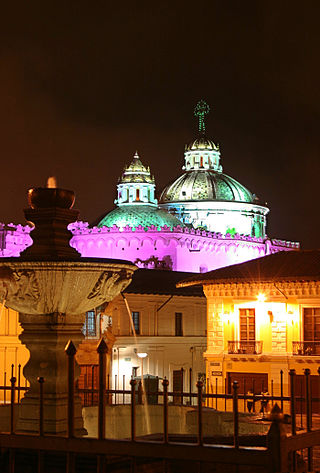
The historic center of Quito is located in the south center of the city of Quito, in Ecuador, on an area of 375.2 hectares, and is considered the best preserved historical complex and one of the most important in Latin America. It has around 130 monumental buildings and five thousand properties registered in the municipal inventory of heritage assets. It is also one of the 85 parishes that make up the metropolitan area of the capital of Ecuador.
Wikipedia: Centro Histórico (parroquia) (ES), Heritage Website
Sight 16: Sucre House
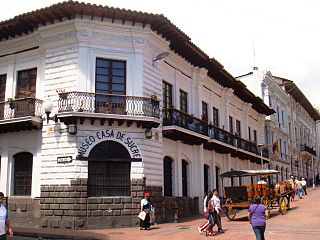
Sucre House is a museum in the historic center of Quito, Ecuador. It was established in 1977 by the Ministry of Defence. It is dedicated to the memory of its most famous occupants: the Venezuelan independence hero, Marshal Antonio José de Sucre, and his wife, Mariana Carcelén.
Sight 17: Teatro Bolivar
Teatro Bolívar is a theatre in Quito, Ecuador. It was established on 15 April 1933, with a capacity of 2400 spectators. It hosted many notable events, including the Miss Ecuador 1996 contest. In 1997, it underwent significant restoration, only to be plagued by fire two years later.
Sight 18: Teatro Sucre
Plaza del Teatro Sucre is the twenty-third stop of the Trolleybus Corridor, in the center of the city of Quito. Its main platform is located on Guayaquil Street, intersection with Manabí, in the Historic Center parish; although the platform for the south-north direction is on the other side of the square that presides over the theater.
Sight 19: Museo Camilo Egas
Camilo Egas was an Ecuadorian master painter and teacher, who was also active in the United States and Europe. Egas was married in Paris 1927 to dancer and artist Margarita Gibbons. Camilo Egas museum in Quito illustrates a self portrait of the artist of 1946 that is on the cover of a pamphlet published by them then used for a book Jan 2003 edition by del Banco central del Ecuador.
Sight 20: Basílica del Voto Nacional o del Sagrado Corazón de Jesús
, Website
Sight 21: Busto a Alexander Sabes Petion
Alexandre Sabès Pétion was the first president of the Republic of Haiti from 1807 until his death in 1818. One of Haiti's founding fathers, Pétion belonged to the revolutionary quartet that also includes Toussaint Louverture, Jean-Jacques Dessalines, and his later rival Henri Christophe. Regarded as an excellent artilleryman in his early adulthood, Pétion would distinguish himself as an esteemed military commander with experience leading both French and Haitian troops. The 1802 coalition formed by him and Dessalines against French forces led by Charles Leclerc would prove to be a watershed moment in the decade-long conflict, eventually culminating in the decisive Haitian victory at the Battle of Vertières in 1803.
Sight 22: La Alameda
La Alameda Park is a park in Quito.
Sight 23: Palacio de Cristal Centro cultural Itchimbia
, Website
Share
How likely are you to recommend us?
Disclaimer Please be aware of your surroundings and do not enter private property. We are not liable for any damages that occur during the tours.
GPX-Download For navigation apps and GPS devices you can download the tour as a GPX file.
